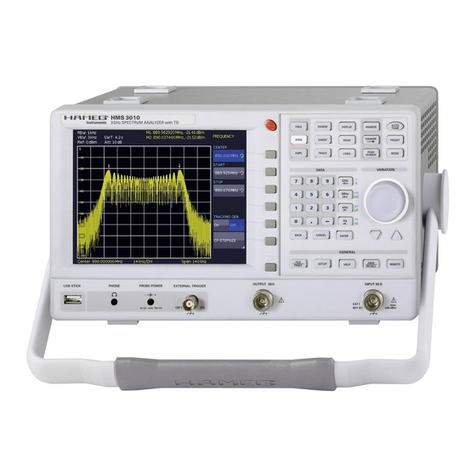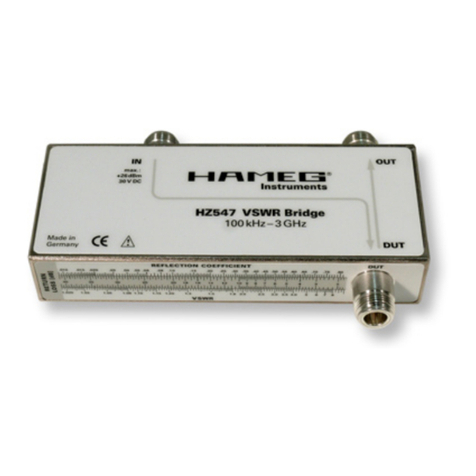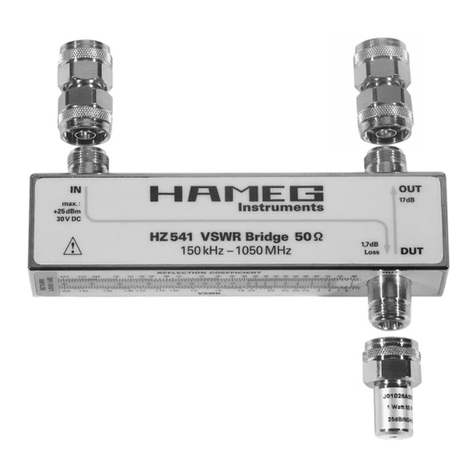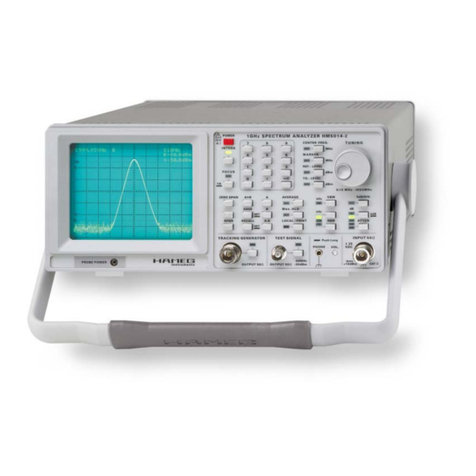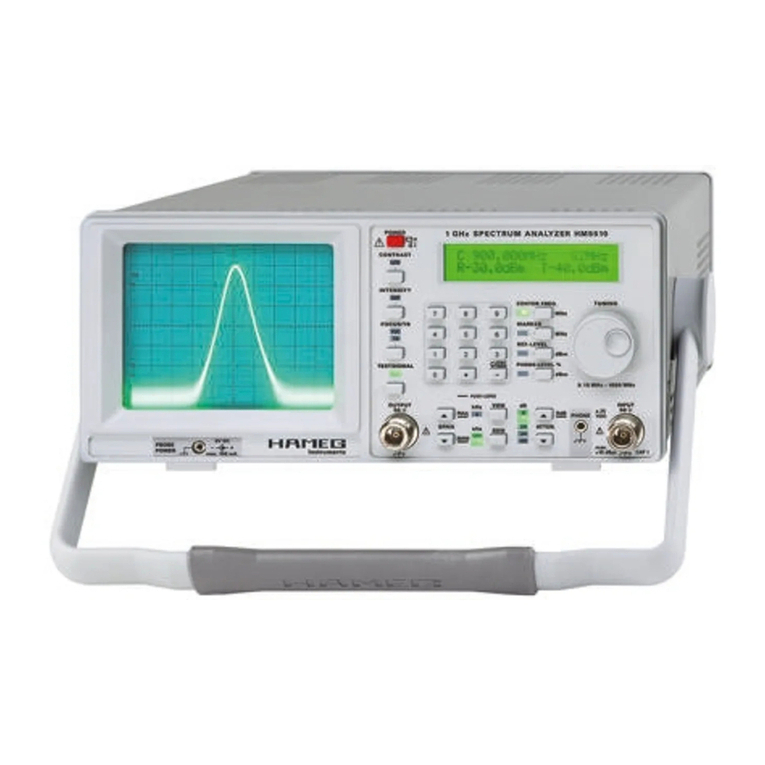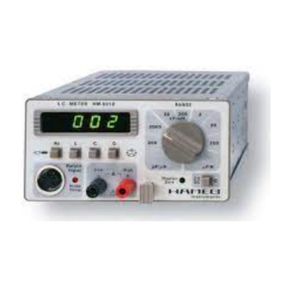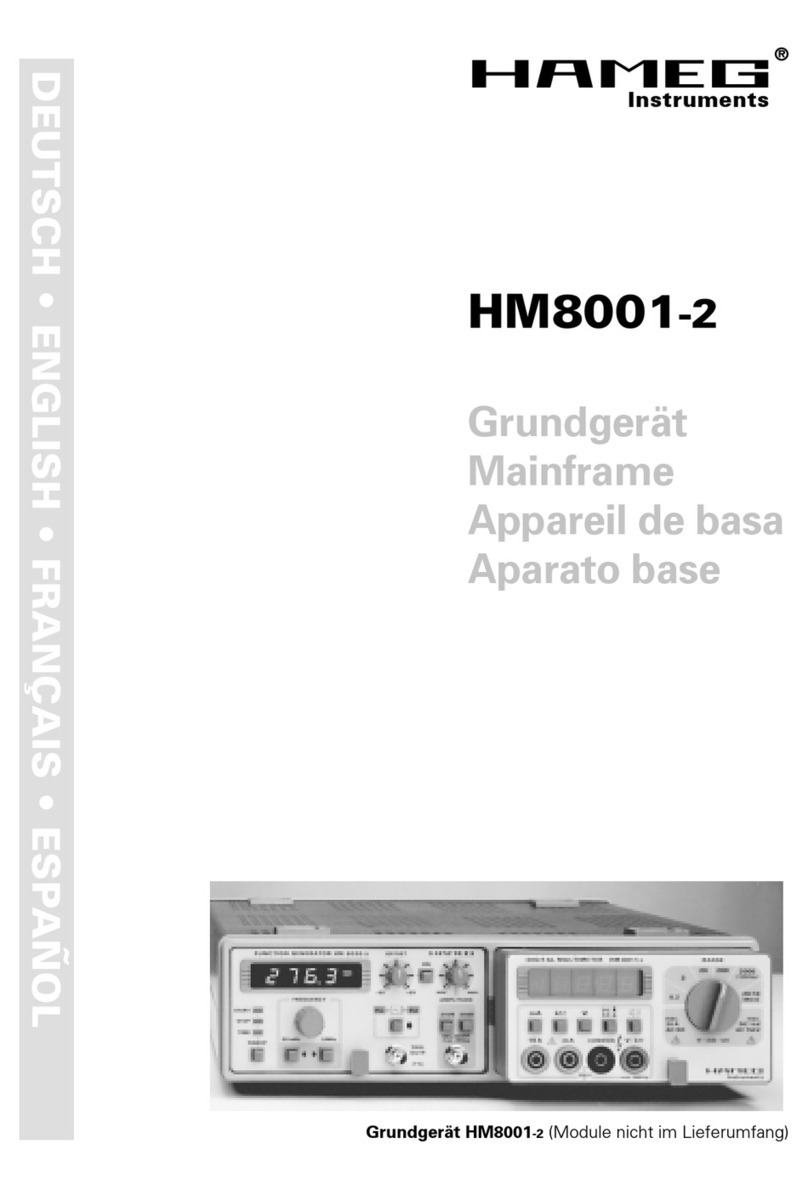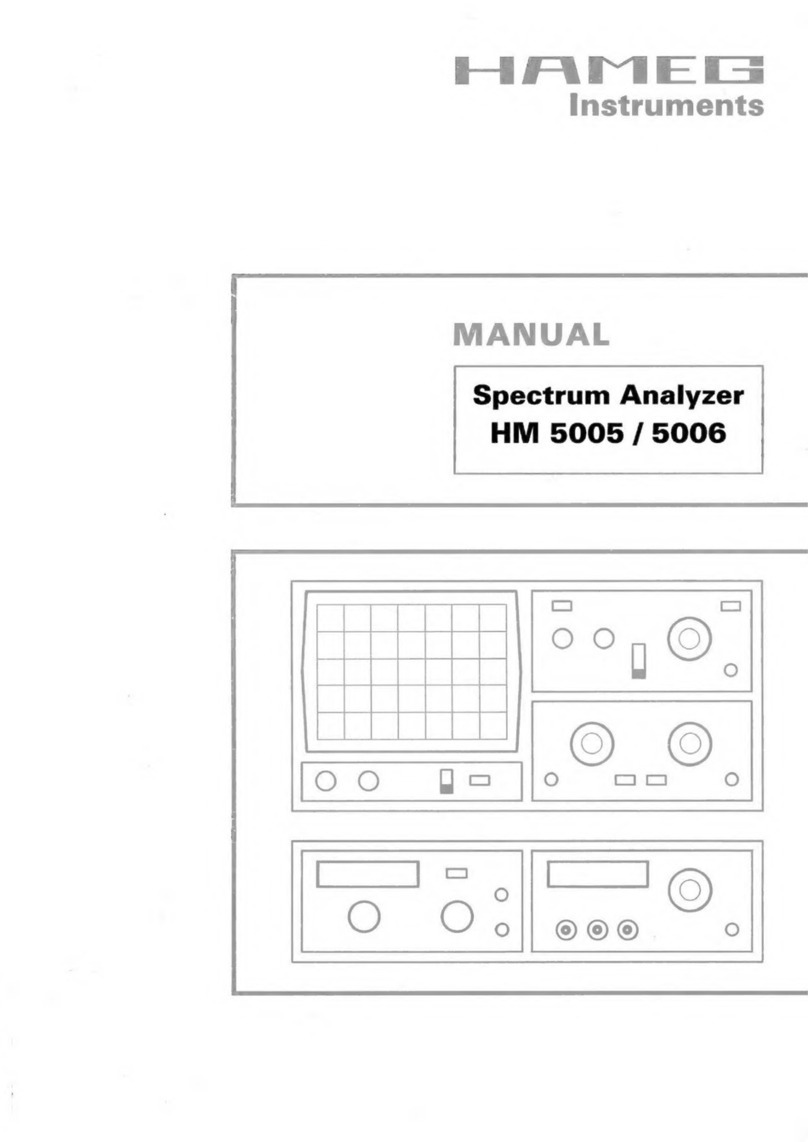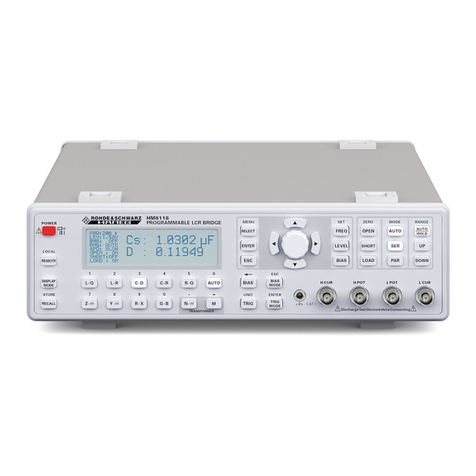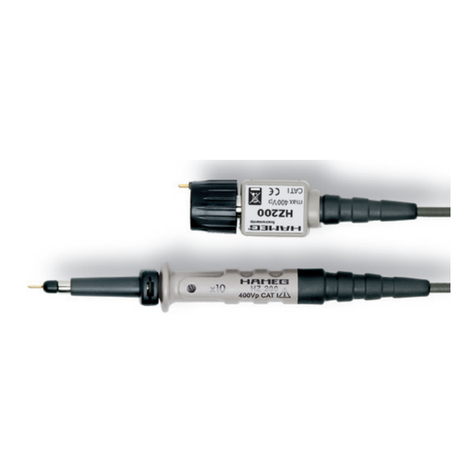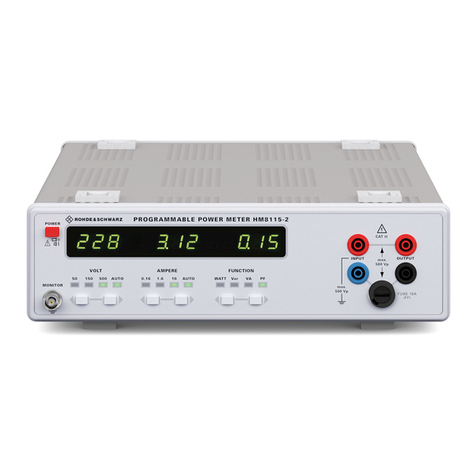
Subject to change without notice
6
Spectrum Analyzer HM 5010/HM5011
I Frequency Range 0.15MHz - 1050MHz.
I 4½ Digit Display (Center & Marker Frequency, 0.1MHz resolution)
I -100 to +13dBm Amplitude Range, 20kHz, 400kHz and Video-Filter
I Tracking-Generator (HM5011 only):
I Frequency range: 0.15MHz - 1050MHz.
I Output Voltage: +1dBm to –50dBm (50ΩΩ
ΩΩ
Ω).
Specifications
Frequency
Frequency range: 0.15MHz to 1050MHz (-3dB)
Center frequency display accuracy: ±100kHz
Marker accuracy: ±(0.1% span + 100kHz)
Frequency display res.: 100kHz (4½ digit LED)
Frequency scanwidth: 100kHz/div. to 100MHz/div.
in 1-2-5 steps and 0Hz/div. (Zero Scan)
Frequency scanwidth accuracy: ±10%
Frequency stability: better than 150kHz / hour
IF Bandwidth (-3dB): Resolution: 400kHz and
20kHz; Video-Filter on: 4kHz
Sweep rate: 43Hz
Amplitude
Amplitude range: -100dBm to +13dBm
Screen display range: 80dB (10dB / div.)
Reference level: -27dBm to +13dBm
(in 10dB steps)
Reference level accuracy: ±2dB
Average noise level: -99dBm (20kHz BW)
Distortion: <-75dBc; 2nd and 3rd harmonic
3rd order intermod.: -70dBc
(two signals >3MHz apart)
Sensitivity: <5dB above average noise level
Log scale fidelity: ±2dB (without attn.) Ref.: 250MHz
Input
Input impedance: 50Ω
Input connector: BNC
Input attenuator: 0 to 40 dB (4 x 10dB steps)
Input attenuator accuracy: ±1dB/10dB step
Max. input level: +10dBm, ±25VDC (0dB attenuation)
+20dBm (40dB attenuation)
Tracking Generator
Output level range: -50dBm to +1dBm
(in 10dB steps and var.)
Output attenuator: 0 to 40dB (4 x 10dB steps)
Output attenuator accuracy: ±1dB
Output impedance: 50Ω(BNC)
Frequency range: 0.15MHz to 1050MHz
Frequency response: ±1.5dB
Radio Frequency Interference (RFI): <20dBc
Misc.
AM-Demodulator output for head-sets.
Permissible load impedance >8Ω
General
Display: CRT. 6 inch, 8 x 10 div. intern. graticule
Trace rotation: Adjustable on front panel
Line voltage: 115 / 230V ±10%, 50-60Hz
Power consumption: approx. 20W
Operating ambient temperature: 0°C..+40°C
Protective system: Safety Class I (IEC 1010-1)
Weight: approx. 7kg
Cabinet: W 285, H 125, D 380 mm
Evolution of the original HM5005/HM5006
has led to the new HM5010/HM5011
Spectrum Analyzer/Tracking Generator
which now extends operation over 1 GHz
(frequency range 0.15 to 1050 MHz). Both
fine and coarse center frequency controls,
combined with a scanwidth selector provide
simple frequency domain measurements
from 100 kHz/div. to 100 MHz/Div. Both
models include a 4½digit numeric LED
readout that can selectively display either
the center or marker frequency. The HM5011
includes a tracking generator.
The HM5010/5011 offer the same
operation modes as the HM5005/5006. The
instruments are suitable for pre-compliance
testing during development prior to third
party testing. A near-field sniffer probe set,
HZ530, can be used to locate cable and PC
board emission "hot spots" and evaluate
EMC problems at the breadboard and pro-
totype level. The combination of HM5010/
5011 with the HZ530 is an excellent solution
for RF leakage/radiation detection, CATV/
MATV system troubleshooting, cellular tele-
phone/pocket pager test, and EMC dia-
gnostics. There is an optional measurement
output for a PC which makes documentation
of results easy and affordable with the HO500
Interface.














